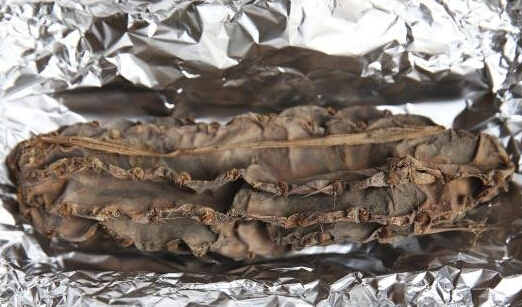4,000-year-old cactus preserved amid ruins in Peru
From:EFE Futuro NetWriter:Date:2016-09-13
The cactus, which is about 30 centimeters (nearly a foot) long, retains some of its needles because it was drained of water in preparation for use as a burial offering in one of the dozen buildings that make up the complex, members of the team told EFE.Dayanna Carbonel, who discovered the plant, said it is the oldest cactus ever to be found in an archaeological excavation and that its prominent inclusion in a ritual offering reflects the plant’s importance to the culture.

Picture shows a cactus about 4,000 years old, possibly hallucinogenic San Pedro species (Echinopsis pachanoi). EFE/Ernesto Arias.
She said that while the people who built El Paraiso may have known of the hallucinogenic properties of cactus, the team has yet to find anything indicating what use the inhabitants made of the plant.
El Paraiso, built where the Chillon River flows into the Pacific Ocean, is roughly 4,000 years old, making it contemporaneous with the Caral civilization, which emerged some 5,000 years ago.
The official responsible for the El Paraiso site, Santiago Morales, said the cactus “may have been used in ceremonies and rituals“, given that it was found in an annex to a ceremonial chamber.
“We are recovering material and details to obtain all possible information. Each month we archive between 2,000 and 2,500 bags of materials,” Morales said.
He pointed out that only four of the 12 structures at El Paraiso have undergone excavation since the current dig began in October 2015, resuming the effort launched in the 1960s by Swiss archaeologist Frederic Engel.

